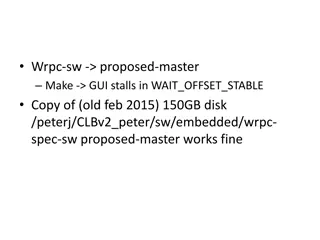
Advanced Swing and MVC Tutorial with Examples
Explore the concepts of Advanced Swing and MVC architecture with practical examples. Learn how to customize data models, cell renderers, and GUI components in Java. Dive into JList functionality, constructors, methods, and more to enhance your GUI development skills.
Download Presentation

Please find below an Image/Link to download the presentation.
The content on the website is provided AS IS for your information and personal use only. It may not be sold, licensed, or shared on other websites without obtaining consent from the author. If you encounter any issues during the download, it is possible that the publisher has removed the file from their server.
You are allowed to download the files provided on this website for personal or commercial use, subject to the condition that they are used lawfully. All files are the property of their respective owners.
The content on the website is provided AS IS for your information and personal use only. It may not be sold, licensed, or shared on other websites without obtaining consent from the author.
E N D
Presentation Transcript
Chapter 8 Advanced Swing & MVC Originals of Slides and Source Code for Examples: http://courses.coreservlets.com/Course-Materials/java5.html
MVC Architecture Custom data models Changing the way the GUI control obtains the data. Instead of copying data from an existing object into a GUI control, simply tell the GUI control how to get at the existing data Custom cell renderers Changing the way the GUI control displays data values. Instead of changing the data values, simply tell the GUI control how to build a Swing component that represents each data value Main applicable components JList JTable JTree 2 2
Outline 3 JList JTable JTree JSplitPane JSlider Key Events Mouse Events
JList Outline JList overview Building a JList with fixed set of choices Adding and removing entries from a JList at runtime Making a custom data model Telling JList how to extract data from existing objects Making a custom cell renderer Telling JList what GUI component to use for each of the data cells 4 4
JList Purpose To present a set of choices to a user Behavior Items in JList can be selected individually or in a group A JList does not provide support for double-click action 5 5
JList Constructors JList() Constructs a JList with an empty model JList(Object[] listData) Displays the elements of the specified array Example: String[] words= { "quick", "brown", "hungry", "wild", ... }; JList wordList = new JList(words); JList (ListModel dataModel) displays the elements in the specified, non-null list model 6 6
JList Methods int getSelectedIndex() void setSelectedIndex(int index) gets or sets the selected index int[] getSelectedIndices() void setSelectedIndices(int[] index) gets or sets the array of selected indices Object getSelectedValue() returns the first selected value or null if the selection is empty Object[] getSelectedValues() returns the selected values or an empty array if the selection is empty boolean isSelectedIndex(int index) returns true if the specified index is selected 7 7
JList Methods (cont.) boolean isSelectionEmpty() returns true if no item is currently selected int getVisibleRowCount() void setVisibleRowCount(int height) get or set the number of rows in the list that can be displayed without a scroll bar int getSelectionMode() void setSelectionMode(int mode) sets the selection mode for the list using ListSelectionModel constants (ListSelectionModel.SINGLE_SELECTION, ListSelectionModel.SINGLE_INTERVAL_SELECTION- contiguous items, ListSelectionModel.MULTIPLE_INTERVAL_SELECTION), by default, a user can select multiple items 8 8
Handle event of JList When the current selection changes, JList object generates a ListSelection event implement ListSelectionListener (in package: javax.swing.event) Method: public void valueChanged (ListSelectionEvent e) Register public void valueChanged (ListSelectionEvent e) { Object value = list.getSelectedValue(); //do something with value } public void valueChanged (ListSelectionEvent e) { Object[] items = list.getSelectedValues(); for (Object value : items) //do something with value } 9 9
JList with fixed set of choices Build JList: The simplest way to use a JList is to supply an array of strings to the JList constructor. Cannot add or remove elements once the JList is created String options = { "Option 1", ... , "Option N"}; JList optionList = new JList(options); Set visible rows Call setVisibleRowCount and drop JList into JScrollPane optionList.setVisibleRowCount(4); JScrollPane scrolList = new JScrollPane(optionList); someContainer.add(scrolList); 10 10
Example: JListSimpleDemo.java String[] entries = { "Entry 1", "Entry 2", "Entry 3", "Entry 4", "Entry 5", "Entry 6" }; JList lstEntry; lstEntry = new JList(entries); lstEntry.setVisibleRowCount(4); JScrollPane listPane = new JScrollPane(lstEntry); JPanel pCen = new JPanel(); pCen.setBorder(BorderFactory.createTitledBorder("Simple JList")); pCen.add(listPane); add(pCen, BorderLayout.CENTER); 11 11
Example: JListSimpleDemo.java (cont.) public void valueChanged(ListSelectionEvent e) { if (!e.getValueIsAdjusting()) { Object value = lstEntry.getSelectedValue(); if (value != null) { txtSelected.setText(value.toString()); } } } 12 12
Editing JList In the JList class, no methods to add or remove items, so you cannot directly edit the collection of list values To add or remove elements, you must access the ListModel ListModel is an interface. How do you obtain it? 1. Constructing your own list by creating a class that implements the ListModel interface 2. Using a DefaultListModel class (in package javax.swing) 13 13
JList with Changeable Choices Build JList: Create a DefaultListModel, add data, pass to constructor: DefaultListModel sampleModel = new DefaultListModel(); JList optionList = new JList(sampleModel); Set visible rows Same: Use setVisibleRowCount and a JScrollPane Add/remove elements Use the model, not the JList directly 14 14
Methods in DefaultListModel void addElement(Object obj) adds object to the end of the model boolean removeElement(Object obj) removes the first occurrence of the object from the model. Return true if the object was contained in the model, false otherwise int getSize() returns the number of elements of the model Object getElementAt(int position) returns an element of the model at the given position void setElementAt(Object item, int index) sets item at index 15 15
TraverseDefaultListModel To traverse all elements of the model, using: Enumeration e = listmodel.elements(); while (e.hasMoreElements()) { Object o = e.nextElement(); // process o } Package: java.util 16 16
Example: JListEditDemo.java import java.awt.*; import java.awt.event.*; import javax.swing.*; import javax.swing.event.*; public class ListEditDemo extends JFrame implements ActionListener { JButton btnAdd, btnRemove; JTextField txtName; DefaultListModel listmodelName; JList listName; public ListEditDemo() { super("List Edit Demo"); // list listmodelName = new DefaultListModel(); listName = new JList(listmodelName); add(new JScrollPane(listName), BorderLayout.CENTER); 17 17
Example: JListEditDemo.java (cont.) JPanel pRight; JPanel pTop, pBottom; pTop = new JPanel(); pTop.add(new JLabel("Input Name")); pTop.add(txtName = new JTextField(15)); pBottom = new JPanel(); pBottom.add(btnAdd = new JButton("Add Item")); pBottom.add(btnRemove = new JButton("Remove Item")); pRight = new JPanel(new BorderLayout()); pRight.add(pTop, BorderLayout.NORTH ); pRight.add(pBottom, BorderLayout.CENTER); } add(pRight, BorderLayout.EAST); txtName.addActionListener(this); btnAdd.addActionListener(this); btnRemove.addActionListener(this); setSize(500, 320); setVisible(true); 18 18
Example: JListEditDemo.java (cont.) public void actionPerformed(ActionEvent e) { Object o = e.getSource(); if ( o==btnAdd ) { String name = txtName.getText().trim(); if ( name == "" ) JOptionPane.showMessageDialog(this, "Please input name!"); else { listmodelName.addElement(name); txtName.setText( "" ); } } else if (o.equals (btnRemove)) listmodelName.removeElement(listName.getSelectedValue()); else if (o.equals (btnEdit)) listmodelName.setElementAt( txtName.getText(), listName.getSelectedIndex() ); } public static void main(String[] args){ new ListEditDemo(); }} 19 19
JList with Custom Data Model Build JList Have existing data implement ListModel interface getElementAt Given an index, returns data element getSize Tells JList how many entries are in list addListDataListener Lets user add listeners that should be notified when an item is selected or deselected removeListDataListener Pass model to JList constructor Set visible rows & handle events: as before Add/remove items: use the model 20 20
Example: JList with custom data Rectangle.java RectangleCollection.java RectangleListModel.java JListRectangleGUI.java 21 21
Example: JList with custom data (cont.) // Rectangle.java public class Rectangle { public String toString(){ return width + " , " + height; } } // RectangleListModel.java public class RectangleListModel implements ListModel { private RectangleCollection collection; public RectangleListModel(RectangleCollection collection) { this.collection = collection; } public Object getElementAt(int index) { return collection.getElement(index); } public int getSize() { return collection.getSize(); } public void addListDataListener(ListDataListener l) { } public void removeListDataListener(ListDataListener l) { } } 22 22
Example: JList with custom data (cont.) // JListRectangleGUI.java RectangleCollection collection = new RectangleCollection(); Random gen = new Random(); for (int i = 0; i < 20; i++) { collection.addRectangle(gen.nextInt(20), gen.nextInt(20)); } JList lstRect; RectangleListModel lstModel; lstModel = new RectangleListModel(collection); lstRect = new JList(lstModel); lstRect.setVisibleRowCount(6); JScrollPane listPane = new JScrollPane(lstRect); add(listPane, BorderLayout.CENTER); 23 23
JList with Custom Cell Renderer Idea Instead of predetermining how the JList will draw the list elements, Swing lets you specify what graphical component to use for the various entries. Attach a ListCellRenderer that has a getListCellRendererComponent method that determines the GUI component used for each cell getListCellRendererComponentarguments JList: the list itself Object: the value of the current cell int: the index of the current cell boolean: is the current cell selected? boolean: does the current cell have focus? 24 24
Outline 26 JList JTable JTree JSplitPane JSlider Key Events Mouse Events
JTable A table displays a two-dimensional grid of objects 27 27
Constructors - Methods of JTable JTable(Object[][] entries, Object[] columnNames) constructs a table with a default table model JTable(TableModel model) displays the elements in the specified, non-null table model int getSelectedRow() returns the index of the first selected row, -1 if no row is selected Object getValueAt(int row, int column) void setValueAt(Object value, int row, int column) gets or sets the value at the given row and column int getRowCount() returns the number of row in the table 28 28
JTable with Fixed Set of Choices Build JTable: Supply the column names: String[] columnNames = { "Ma mon", "Ten mon", "So tin chi"}; Create data in two-dimensional array of Object: Object[][] cells = {{"001", "Lap trinh Windows", new Integer(5)}, {"002", "Do hoa may tinh", new Integer(4)}, {"003", "Phan tich thiet ke", new Integer(5)}, }; Construct a table from the cell and column name arrays: JTable table = new JTable(cells, columnNames); Finally, add scroll bars in the usual way, by wrapping the table in a JScrollPane: JScrollPane pane = new JScrollPane(table); 29 29
Example: JTableDemo.java import javax.swing.*; import java.awt.*; import java.awt.event.*; class JTableDemo extends JFrame { public JTableDemo() { super( JTable demo ); String[] colnames = { Ma mon", Ten mon", So tin chi"}; Object[ ][ ] cells = { {"001", "Lap trinh Windows", new Integer(5)}, {"002", "Do hoa may tinh", new Integer(4)}, {"003", "Phan tich thiet ke", new Integer(5)} }; JTable table = new JTable(cells, colnames); add(new JScrollPane(table)); setSize(200,200); setVisible(true); } public static void main(String args[]) { new JTableDemo(); } } 30 30
JTable with Changeable Choices Build JTable: Create a columns name array, create a DefaultTableModel, pass to constructor String[] cols= {"Ma mon", "Ten mon", "So tin chi"}; DefaultTableModel model=new DefaultTableModel(cols,0); JTable table = new JTable(model); JScrollPane pane = new JScrollPane(table); Add/remove elements Use the model, not the JTable directly 32 32
Methods in DefaultTableModel void addRow(Object[] rowData) add a row of data to the end of the table model void insertRow(int row, Object[] rowData) adds a row of data at index row void removeRow(int row) removes the given row from the model 33 33
Example: JTableEditDemo.java public void actionPerformed(ActionEvent e) { Object o = e.getSource(); if (o.equals(btnAdd)) { if( txtHo.getText().equals("") || txtTen.getText().equals("")) JOptionPane.showMessageDialog(this, "Phai nhap du lieu truoc."); else { Object[] obj = new Object[2]; obj[0] = txtHo.getText(); obj[1] = txtTen.getText(); model.addRow(obj); } } else if (o.equals(btnRemove)) { if (table.getSelectedRow() == -1) JOptionPane.showMessageDialog(this, "Phai chon dong can xoa."); else{ if (JOptionPane.showConfirmDialog(this,"Ban co muon xoa dong nay khong?","Canh bao",JOptionPane.YES_NO_OPTION)==JOptionPane.YES_OPTION model.removeRow(table.getSelectedRow()); } } 34 34
Example: JTableEditDemo.java } else if (o.equals(btnEdit)) { if (table.getSelectedRow() == -1) JOptionPane.showMessageDialog(this, else { // lay dong dang chon tren table int row = table.getSelectedRow(); model.setValueAt( txtHo.getText(), row, 0 ); model.setValueAt( txtTen.getText(), row, 1 ); } "Phai chon dong can sua."); 35 35
Event of JTable We use MouseEvent to process event of choosing rows on JTable implement MouseListener (in java.awt.event) method ? register ? public void mouseClicked (MouseEvent e) {} public void mousePressed (MouseEvent e) {} public void mouseReleased (MouseEvent e) {} public void mouseEntered (MouseEvent e) {} public void mouseExited (MouseEvent e) {} 36 36
Example: JTableEditDemo.java public void mouseClicked(MouseEvent e) { // lay dong dang chon tren table int row = table.getSelectedRow(); txtHo.setText(table.getValueAt(row, 0).toString()); txtTen.setText(table.getValueAt(row, 1).toString()); } public void mousePressed(MouseEvent e) {} public void mouseReleased(MouseEvent e) {} public void mouseEntered(MouseEvent e) {} public void mouseExited(MouseEvent e) {} 37
JTable with Custom Data Model Build custom JTable Create a class has Vector field, this classextends AbstractTableModel public int getColumnCount() public int getRowCount() public void setValueAt(Object value, int row, int col) public Object getValueAt(int row, int col) public String getColumnName(int col) public Class getColumnClass(int c) Pass model to JTable constructor Add/remove items: use the model Handle events: as before 38 38
Example: JTable with custom data Student.java StudentTableModel.java JTableWithStudentTableModelGUI.java 39 39
Outline 40 JList JTable JTree JSplitPane JSlider Key Events Mouse Events
JTree JTree is used to display hierarchical data A JTree is composed of TreeNode Root node Parent node Child node Leaf node 41 41
Contructors of JTree JTree (TreeNode root) construct a tree with a default tree model that displays the root JTree (TreeModel model) constructs a tree from a tree model TreeNode is an interface. How do you obtain it? Using the DefaultMutableTreeNode class (in package javax.swing.tree) Constructing your own treenode by creating a class that implements the TreeNode interface 42 42
Methods of JTree void setEditable(boolean b) If b is true, then a node on JTree can be edited void setRootVisible(boolean b) If b is true, then the root node is displayed void makeVisible(TreePath path) Expands all nodes along the path void scrollPathToVisible(TreePath path) Expands all nodes along the path and, if the tree is contained in a scroll pane, scrolls to ensure that the last node on the path is visible Object getLastSelectedPathComponent() Gets the node object that represents the currently selected node, or the first node if multiple nodes are selected. Returns null if no node is selected 43 43
Event of JTree When the user selects tree nodes, a tree produces a TreeSelectionEvent implement TreeSelectionListener (javax.swing.event) method public void valueChanged(TreeSelectionEvent event) That method is called whenever the user selects or deselects tree nodes register 44 44
JTree with Fixed Set of Nodes Build JTree Create a root node and child nodes: DefaultMutableTreeNode root=new DefaultMutableTreeNode("World"); DefaultMutableTreeNode country; country = new DefaultMutableTreeNode("USA"); root.add(country); country = new DefaultMutableTreeNode("Germany"); root.add(country); Pass root node in JTree s constructor: JTree tree = new JTree(root); Add JTree to scrollpane: JScrollPane scrollTree = new JScrollPane(tree); 45 45
JTreeSimpleDemo.java import java.awt.*; import javax.swing.*; import javax.swing.tree.*; public class TreeSimpleDemo extends JFrame { JTree tree; public TreeSimpleDemo() { setTitle("Simple Tree demo"); // set up tree model data DefaultMutableTreeNode root = new DefaultMutableTreeNode("World"); DefaultMutableTreeNode country = new DefaultMutableTreeNode("USA"); root.add(country); DefaultMutableTreeNode state = new DefaultMutableTreeNode("California"); country.add(state); DefaultMutableTreeNode city = new DefaultMutableTreeNode("San Jose"); state.add(city); city = new DefaultMutableTreeNode("Cupertino"); state.add(city); state = new DefaultMutableTreeNode("Michigan"); country.add(state); 46 46
JTreeSimpleDemo.java (cont.) city = new DefaultMutableTreeNode("Ann Arbor"); state.add(city); country = new DefaultMutableTreeNode("Germany"); root.add(country); state = new DefaultMutableTreeNode("Schleswig-Holstein"); country.add(state); // construct tree and put it in a scroll pane tree = new JTree(root); JScrollPane scrollTree = new JScrollPane(tree); add(scrollTree); setSize(300, 200); setVisible(true); } public static void main(String[] args) { new TreeSimpleDemo(); } } 47 47
Methods of DefaultMutableTreeNode intgetChildCount(Object parent) returns the number of children of parent TreeNodegetParent() returns the parent node of the node intgetIndex(TreeNodeitem) return the index of the node ObjectgetUserObject() returns this node's user object Enumeration breadthFirstEnumeration() Enumeration depthFirstEnumeration() return enumeration objects for visiting all nodes of the tree model in a particular order 48 48
Visit all nodes Sometimes you need to find a node in a tree by starting at the root (or any node) and visiting all children until you have found a match The typical usage pattern (if beginning from root node) DefaultMutableTreeNode root = (DefaultMutableTreeNode) tree.getModel().getRoot(); Enumeration e = root.breadthFirstEnumeration(); while (e.hasMoreElements()) { DefaultMutableTreeNode node = (DefaultMutableTreeNode) e.nextElement(); // process node } 49 49
Editing in JTree JTreedoesn t actually store the data; it provides an organized view that allows the user to traverse the data So you edit its data from a TreeModel TreeModelis interface. How do you obtain a it? Using the DefaultTreeModel (in package javax.swing.tree) Constructing your own model by creating a class that implements the TreeModel interface 50 50
Editing in JTree with DefaultTreeModel Build JTree Create root node and child nodes DefaultMutableTreeNode root=new DefaultMutableTreeNode( "); You can establish the parent/child relationships between the nodes by using the add method Construct a DefaultTreeModel with the root node DefaultTreeModel treeModel = new DefaultTreeModel (root); Construct a JTree with the tree model JTree tree = new JTree (treeModel); Add JTree to scrollpane: same before 51 51






















